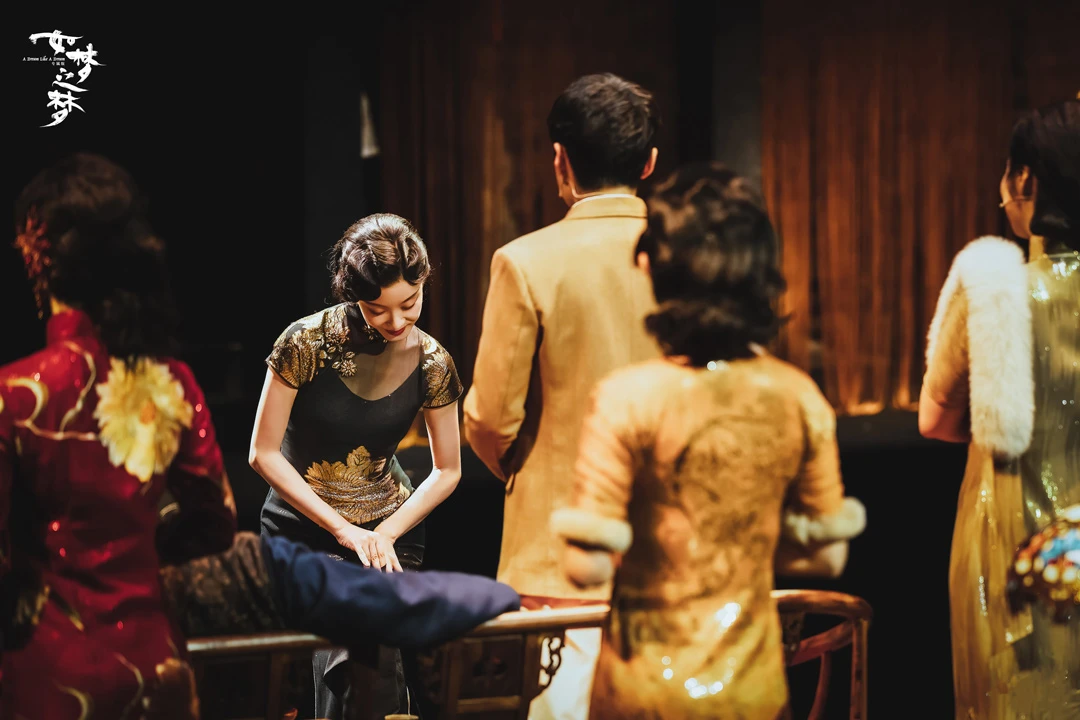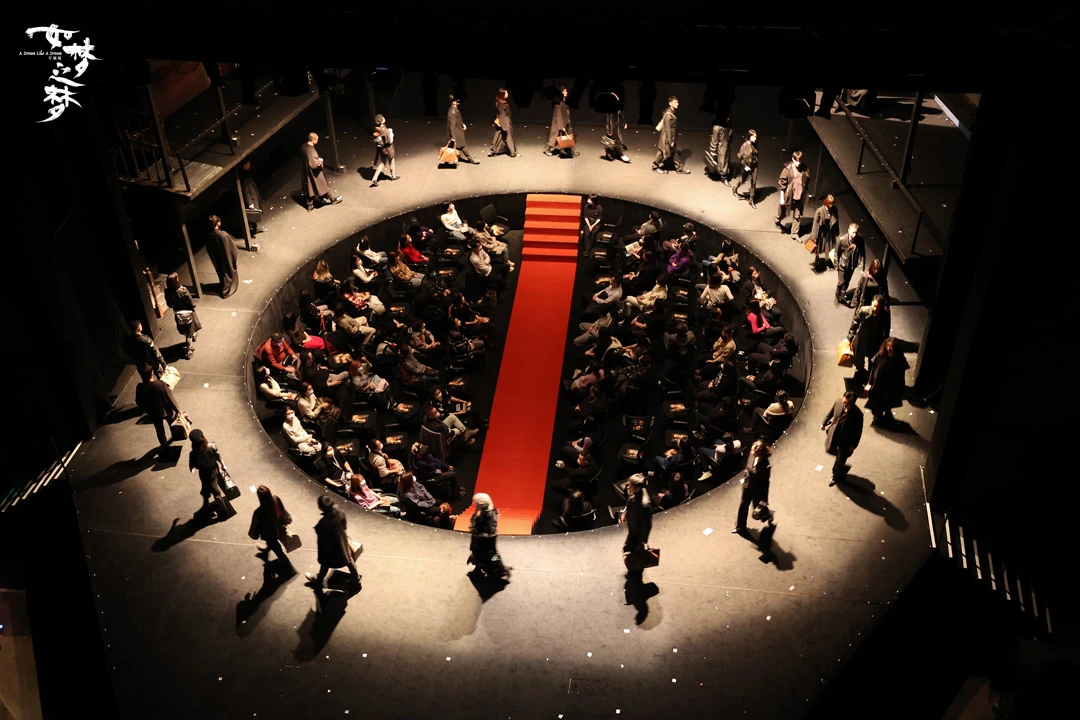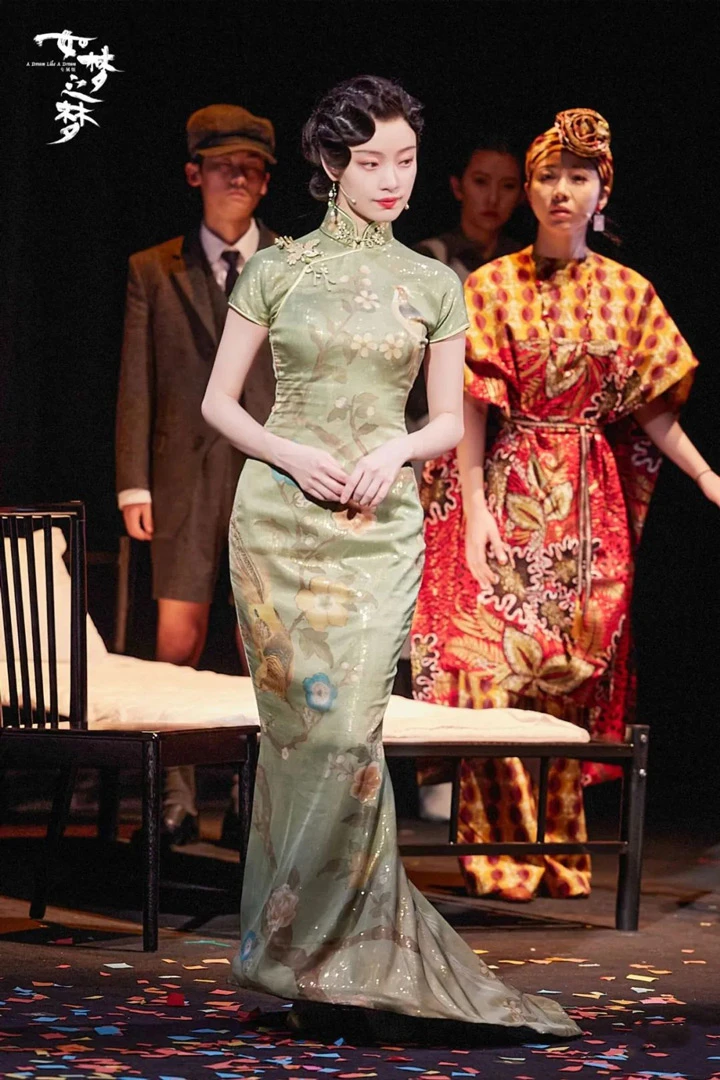The play “Like a Dream in a Dream,” written and directed by Stan Lai, was created 24 years ago. With a runtime of 8 hours, it is considered an “immersive, panoramic life epic.” The production features nearly 30 actors, including Ni Ni, Wen Zhang, Fan Guangyao, Zhao Xiaosu, Zong Juntao, Feng Li, and performers from the Shanghai Theatre Academy.
In the play, Ni Ni portrays the character “Gu Xianglan,” and her various cheongsam styles are a sight to behold. Behind the scenes, the play’s costume designer, Huang Wei, also known as the “fashion godmother,” has created exclusive designs for “Like a Dream in a Dream.” The costumes span across ancient and modern times, as well as Eastern and Western styles, with Gu Xianglan’s cheongsam incorporating intangible cultural heritage techniques.
Gu Xianglan’s every appearance on stage is stunning, and this is closely tied to the play’s costume design. Huang Wei explains that unlike film and television productions, theater is instantaneous and offers no opportunity for correction. Therefore, every second of what an actor wears on stage presents a significant challenge. During the two-month preparation period, approximately 10 design and styling production teams created 330 sets of clothing.
Huang Wei reveals that after analyzing the script with the director, they identified the important imagery of a “caged bird” for Gu Xianglan, symbolizing her attainment of comfort at the cost of her freedom. As a result, the most crucial pieces in her costume design feature bird imagery. In the final scene where Xianglan offers tea to the Count, her outfit incorporates a magpie pattern, representing her release from the cage and attainment of true freedom.
Huang Wei also mentions that Ni Ni’s cheongsam utilizes intangible cultural heritage production techniques, such as traditional hand-woven “panhua” buttons and innovative elements like sequins, adding exquisite details to the garment.
The incorporation of intangible cultural heritage techniques in Gu Xianglan’s cheongsam not only enhances the visual appeal of the costume but also serves as a testament to the enduring value and relevance of traditional Chinese craftsmanship in contemporary arts and culture.
Intangible cultural heritage refers to the knowledge, skills, and practices passed down through generations within a community, often reflecting the unique identity and values of that group. By integrating these techniques into the cheongsam design, Huang Wei and the production team pay homage to the rich history and artistry of Chinese textile traditions.
The use of hand-woven “panhua” buttons, for example, showcases the intricate craftsmanship and attention to detail that characterizes many intangible cultural heritage practices. These buttons, often made from silk or cotton thread, are skillfully knotted and woven into delicate patterns, adding a touch of elegance and authenticity to the cheongsam.
Similarly, the incorporation of sequins as an innovative element demonstrates how traditional techniques can be adapted and modernized to suit contemporary aesthetics. By blending classic styles with new materials and embellishments, Huang Wei creates a cheongsam that is both timeless and fresh, bridging the gap between the past and the present.
The inclusion of intangible cultural heritage techniques in Gu Xianglan’s cheongsam also highlights the importance of preserving and promoting these valuable cultural assets. As globalization and modernization continue to shape our world, it is crucial to ensure that the knowledge and skills associated with traditional craftsmanship are not lost but rather celebrated and integrated into new forms of artistic expression.
Moreover, by showcasing these techniques on stage, “Like a Dream in a Dream” exposes a wider audience to the beauty and significance of intangible cultural heritage. The play becomes not only a platform for storytelling and performance but also a means of cultural education and appreciation.
The collaboration between Huang Wei and the production team of “Like a Dream in a Dream” serves as an inspiring example of how the arts can play a vital role in safeguarding and promoting intangible cultural heritage. By incorporating traditional techniques into contemporary costume design, they demonstrate the potential for these practices to evolve and remain relevant in the modern world.
This approach not only benefits the preservation of cultural heritage but also enriches the artistic landscape by introducing new generations to the beauty and value of traditional craftsmanship. As audiences witness the stunning visual impact of Gu Xianglan’s cheongsam on stage, they gain a deeper appreciation for the skill and dedication required to create such intricate and meaningful garments.
Furthermore, the use of intangible cultural heritage techniques in the cheongsam design contributes to the overall narrative and themes of the play. The symbolism of the caged bird and the magpie pattern, for example, is enhanced by the careful selection of materials and techniques used in the costume’s creation. The cheongsam becomes not merely a piece of clothing but a powerful storytelling device, conveying the character’s emotional journey and growth throughout the play.
The success of Gu Xianglan’s cheongsam in “Like a Dream in a Dream” may also inspire other artists and designers to explore the possibilities of incorporating intangible cultural heritage into their work. By showcasing the potential for these techniques to be adapted and applied in new contexts, Huang Wei and the production team open up exciting avenues for collaboration and innovation across different artistic disciplines.
Moreover, the recognition and praise garnered by the cheongsam design may contribute to a broader revival of interest in traditional Chinese craftsmanship and its application in contemporary fashion and arts. As more people become aware of the beauty and value of these techniques, there may be a greater demand for products and experiences that celebrate and showcase intangible cultural heritage.
This, in turn, could have significant economic and social benefits, providing new opportunities for artisans and communities to sustain and pass on their knowledge and skills to future generations. By creating a market for products that incorporate traditional techniques, the arts can play a crucial role in ensuring the long-term viability and vitality of intangible cultural heritage.
In conclusion, the incorporation of intangible cultural heritage techniques in Ni Ni’s “Gu Xianglan cheongsam” in “Like a Dream in a Dream” is a shining example of how the arts can serve as a powerful vehicle for cultural preservation and promotion. Through innovative design and collaboration, Huang Wei and the production team have created a costume that not only enhances the visual and narrative impact of the play but also celebrates the enduring beauty and value of traditional Chinese craftsmanship.
As we move forward, it is essential to recognize and support initiatives like this that seek to bridge the gap between the past and the present, ensuring that the rich tapestry of our cultural heritage continues to inspire and enrich our lives. By embracing the potential of intangible cultural heritage in contemporary arts and culture, we not only honor the legacy of our ancestors but also create new opportunities for creativity, innovation, and cultural exchange in an increasingly interconnected world.



